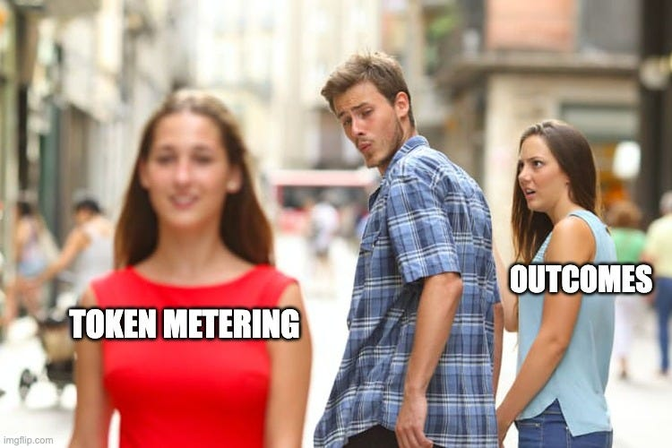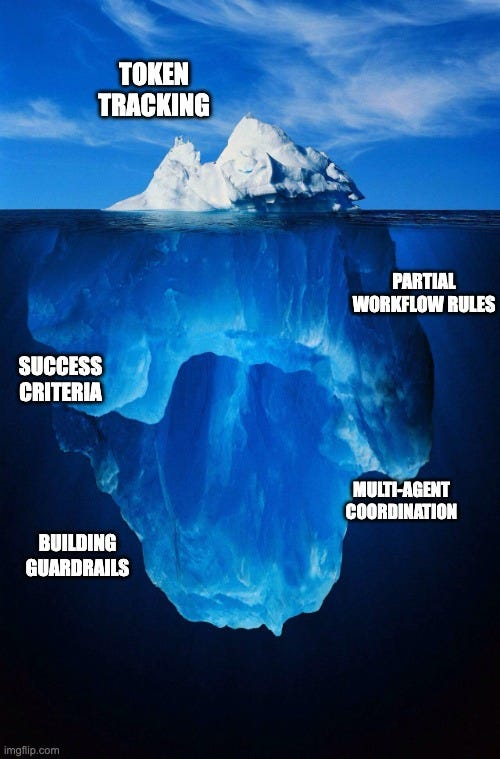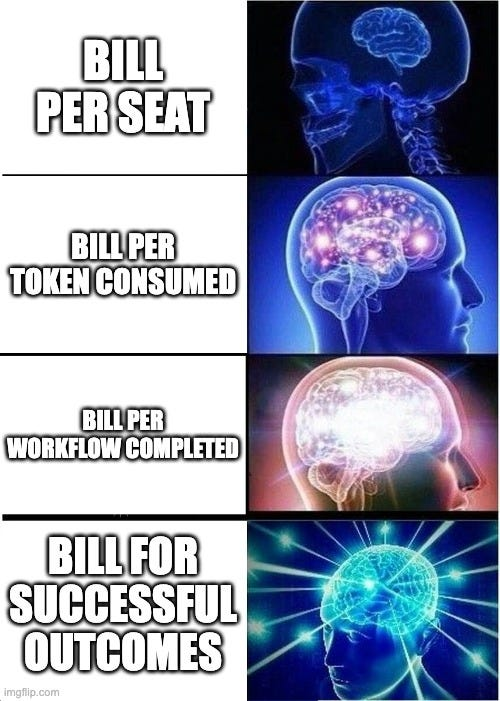Insights straight to your inbox
Join 10,000+ subscribers getting the latest insights on AI monetization.


I've had this conversation at least 10 times in the past few months:
"How do we handle metering for our AI agents? The token tracking is getting complex, and our costs are all over the place."
My answer quite often surprises people: Metering isn't your problem.
Not because it's technically impossible, but because you’ve not understood what you should be measuring.

I’ve seen this so many times:
Then then they wonder why customers hate their pricing and churn after pilots.
Yes, the technical solution was good, but the problem was wrong.

I’ve built a few billing systems, so let me tell you. AI agent metering is fundamentally easier than traditional SaaS or even other AI systems because:
Lower volume, cleaner signals:
Compare this to traditional AI metering challenges:
Everyone gets stuck on metering because they’re coming from a mindset that’s copying what they’ve seen with OpenAI or other foundational models.
Sometimes, it’s where consumption correlates with value.
But AI agents are very different.
In SaaS: More usage generally = more value
In AI: Consumption has zero correlation with value
Should Email B cost 5x more? Absolutely not.
If metering isn't the hard problem, what is?
Outcome attribution
This is where the real challenge lies, in my opinion.
The hard problems are:
Token counting? That's the easy part.
But that’s why so many companies end up counting tokens. It’s easier.
You absolutely should track consumption - for internal optimization, not customer billing.
Paid lets you do both in one go. You can track costs and charge your customer at the same time.
The price of the outcome will be based on a separate pricing you agree with your customers, not directly tied to a token cost.
paid = Paid::Client.new( [...] )
paid.usage.record_usage(
signal: {
agent_id: "agent_1",
event_name: "document_processed",
customer_id: customer_id
data: {
'llm_tokens': 15000,
'llm_cost': 0.045,
'infrastructure_cost': 0.023,
'processing_time': 45.2,
}
}
)
Think of it like a restaurant: You pay $12 for a pizza, while the restaurant tracks labor costs and rent obsessively. But they don't charge you $2.50 for flour + $0.30 for tomatoes + $4.20 for chef time.
You shouldn’t build your own elaborate metering systems for AI agents.
Agent behaviour makes it easier than traditional SaaS, but the business model makes it irrelevant to meter.
The companies we see succeed the most spend time on the success criteria, not on real-time token consumption tracking - and definitely not on GPU inference time.
Your customers don't care about your infrastructure costs. They care about the business problems you solve.
Meter for margins. Bill for outcomes!
Join 10,000+ subscribers getting the latest insights on AI monetization.



Price smarter. Protect margins. Grow revenue.